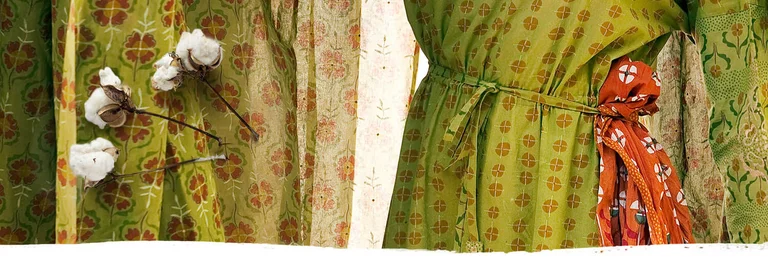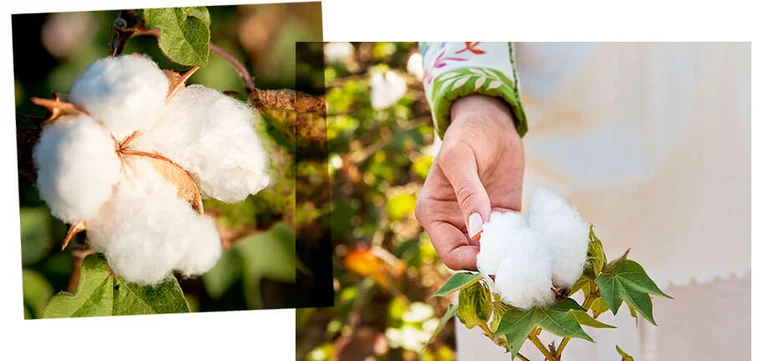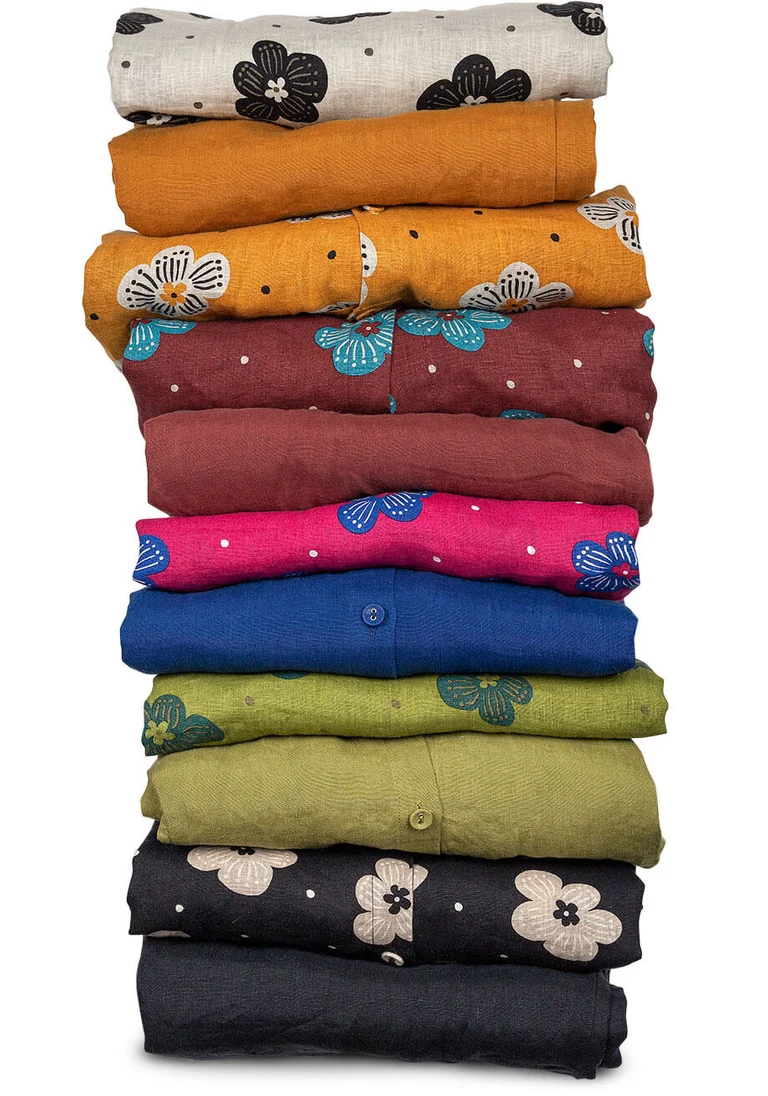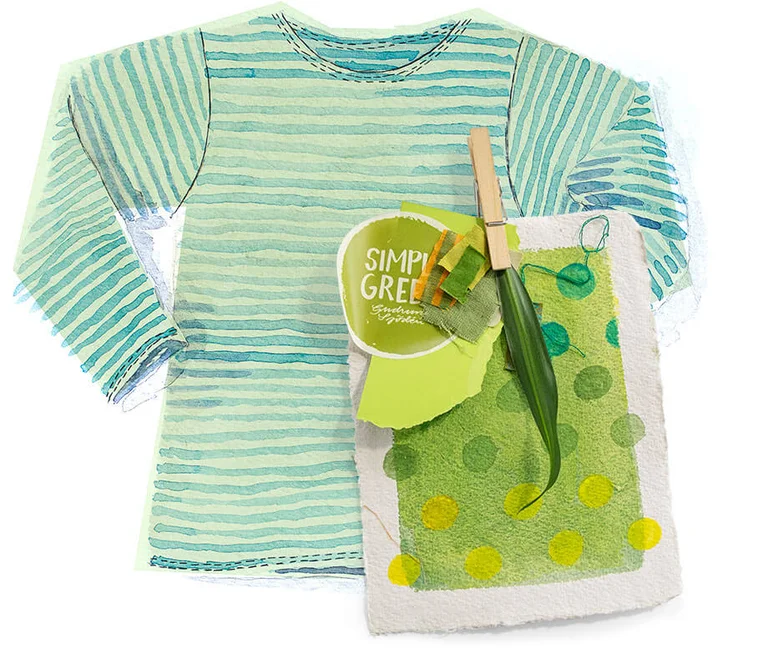
TEXTILE MATERIALS
Nature gave us both the little cotton plant with its soft seedpods and the grazing sheep with their thick fleece that they don’t need in summer. We understood that flax plants had long fibres that could be spun into yarn and woven into fabric. The Chinese discovered that the little silkworm in its cocoon could spin a shiny thread many hundreds of metres long, from which garments could be made. Here in the modern era, we also make our textiles from cellulose (wood), to produce viscose, modal and lyocell. We extract oil from the ground for making synthetic fibres, which, thankfully, can now also be recycled! Personally, I’ll be sticking with the natural materials that grow and live as part of the natural cycle.
Read more:
Manufacturing » Washing & care » Our environmental awareness »


Organic cotton
We’ve had organically manufactured cotton jersey in our collections since the early 90s. A fabric and manufacturing standard we take immense pride in! Nowadays, we use organic cotton in almost all of the woven and knitted fabrics in our clothing, accessories and home textiles. In most cases, the cotton fibre is organically dyed too, which is a good thing, as these wet processes involve a great environmental responsibility.
![]()
Cotton
Cotton is my favourite fibre for its amazing versatility and wearability. The longer the fibres, the higher-grade the cotton. A distinction is made between carded cotton which is porous and rather coarse, and carded cotton that is less porous, has a smooth surface and shrinks less. Nowadays, cotton can be recycled from textile industry scraps and from discarded garments and textiles too.
![]()
Wool
Wool is a very useful fibre, as it is heat insulating even when wet. The natural lanolin that conditions the fleece makes wool self-cleaning and dirt-repellent, which is why it can so often be aired instead of washed.
Merino Merino sheep are bred for their superior wool fleece. The wool fibres are fine, naturally crimped and soft. Merino sheep are the most valued breed for wool production globally. We often use merino wool, and sometimes organic merino wool. All of our merino wool is mulesing-free.
Cashmere comes from domesticated goats that live in very cold climates. The name comes from the Kashmir region of Northern India. Cashmere is made from the soft, delicate undercoat fibres.
Alpaca is a very fine, soft wool. Alpaca counts as an environmentally sound fibre. The wool contains no lanolin, so large amounts of water and energy can be saved in the washing process.
Yakwool is warmer than standard wool, lightweight and very smooth and soft.
![]()

Mulesing-free wool
All of our merino wool is certified mulesing-free. Mulesing is a painful practice involving merino sheep.
![]()

Flax
For centuries, flax was the most-widely used textile fibre around the world. The linen fabric made from flax is prized to this day for its smoothness, dirt-repellency and washability. One of the few drawbacks is its tendency to wrinkle, but even that is often seen as the whole appeal of linen!
![]()
Dew-retted flax
Retting using dew is an ancient method of processing the stalks of the flax plant used for making linen fabric. The flax is laid out in the fields so the dew and rainfall can transform the plant into a workable fibre. Chemical retting speeds up the process, but is less environmentally sustainable. We often use organically certified linen made from dew-retted flax.
![]()
Silk
The term silk refers to both the fibre and the fabric. The art of silk-making in China was a closely guarded secret dating back almost two millennia. The beautiful silk threads are spun by a silk worm fed mulberry leaves. The length of the silk thread in a single cocoon is more than 1,000 metres long. Wild silk is coarser and more uneven in texture than commercial silk, but has its own distinct charm.
![]()
Viscose
Is one of the so-called regenerated fibres. These textile fibres are made from naturally grown organic material, usually cellulose (plant cell walls), which is dissolved and then regenerated into fibres. Today, instead of viscose, we tend to use lyocell and modal because producing these fibres is more eco-friendly.
![]()

Lyocell & modal
These materials are also regenerated fibres. We make frequent use of these, as they are soft and smooth against the skin. Those manufactured by Lenzing in closed-loop systems are rated as some of the most eco-friendly fibres on
the market.
![]()
Bamboo
Grows in tropical, sub-tropical and temperate regions of Asia. Due to its rapid growth, bamboo is now one of the plants used for regenerated fibres, such as bamboo viscose and bamboo lyocell. The fibres are often used in socks.
![]()
Recycled fibres
Increasingly, we make use of recycled fibres. These are typically made from textile industry scraps of cotton, polyamide and wool.
![]()
Textile finishes
Our wind-resistant garments are impregnated with a fluorine-free finish to make them water-repellent too. Our rainwear is finished in the same way, but also has a polyurethane coating on the inside and taped seams for full waterproofing.
![]()
